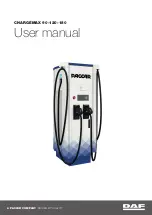
6. Start the engine and let it run until you can feel the
upper radiator hose getting hot. Watch out for the
engine cooling fan.
7. By this time, the coolant level inside the radiator
filler neck may be lower. If the level is lower, add
more of the proper DEX-COOL
®
coolant mixture
through the filler neck until the level reaches
the base of the filler neck.
8. Then replace the pressure cap. At any time during
this procedure if coolant begins to flow out of the
filler neck, reinstall the pressure cap. Be sure
the pressure cap is hand-tight.
Engine Fan Noise
This vehicle has a clutched engine cooling fan. When
the clutch is engaged, the fan spins faster to provide
more air to cool the engine. In most everyday driving
conditions the clutch is not engaged. This improves fuel
economy and reduces fan noise. Under heavy vehicle
loading, trailer towing, and/or high outside temperatures,
the fan speed increases when the clutch engages. So
you may hear an increase in fan noise. This is
normal and should not be mistaken as the transmission
slipping or making extra shifts. It is merely the cooling
system functioning properly. The fan will slow down
when additional cooling is not required and the clutch
disengages.
You may also hear this fan noise when you start the
engine. It will go away as the fan clutch disengages.
5-34
Summary of Contents for Bravada 2004
Page 5: ...These are some examples of symbols you may find on your vehicle v...
Page 6: ...NOTES vi...
Page 16: ...Put someone on it Get it up to speed Then stop the vehicle The rider doesn t stop 1 10...
Page 106: ...NOTES 2 44...
Page 109: ...NOTES 3 3...
Page 110: ...Instrument Panel Overview 3 4...
Page 276: ...Engine Compartment Overview When you open the hood you ll see the following 5 12...
Page 364: ...5 100...
Page 370: ...NOTES 5 106...
Page 402: ...NOTES 7 14...
















































